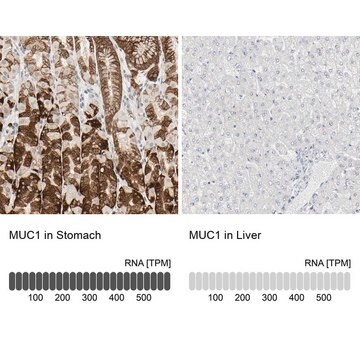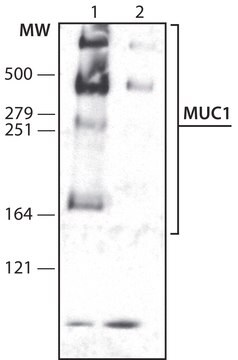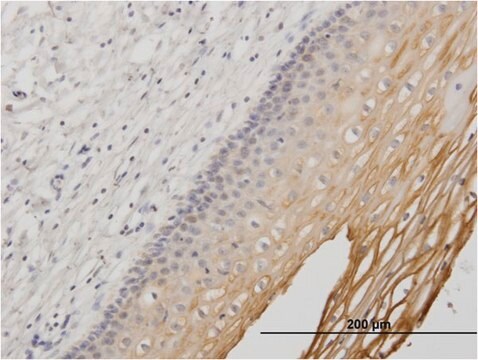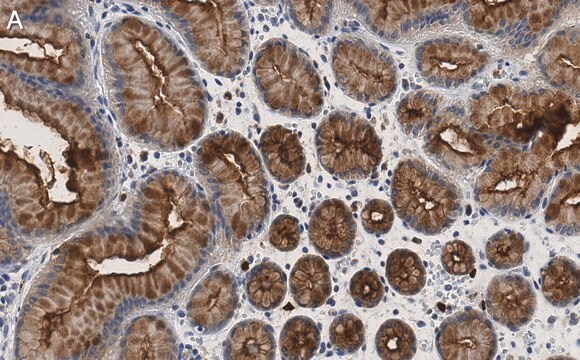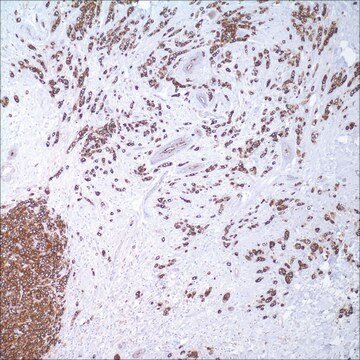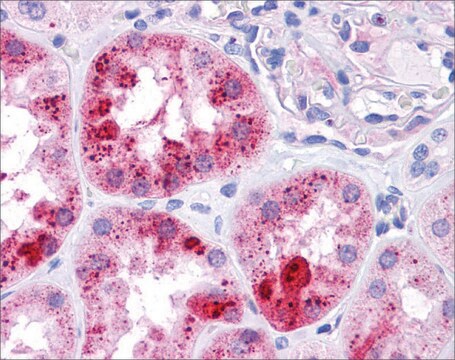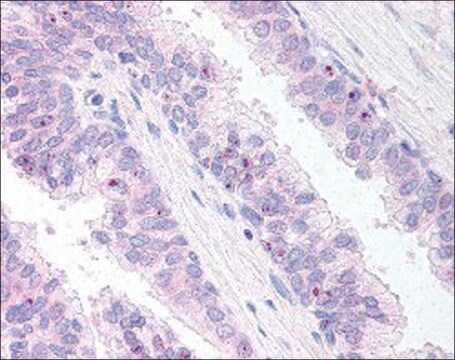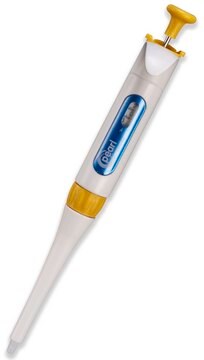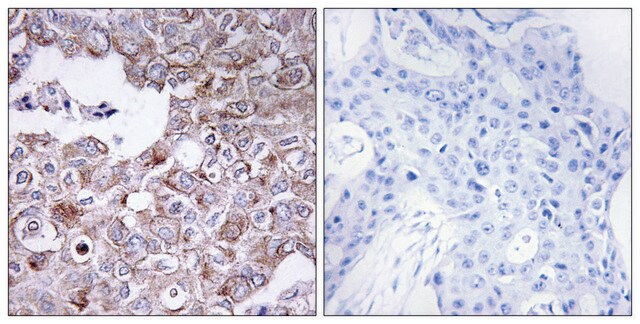MABC1613
Anti-MUC1 Antibody, clone HMFG2
clone HMFG2, from mouse
Sinónimos:
Mucin-1, Breast carcinoma-associated antigen DF3, Cancer antigen 15-3, CA 15-3, Carcinoma-associated mucin, Episialin, H23AG, Krebs von den Lungen-6, KL-6, PEMT, Peanut-reactive urinary mucin, PUM, Polymorphic epithelial mucin, PEM, Tumor-associated epit
About This Item
Productos recomendados
origen biológico
mouse
Nivel de calidad
forma del anticuerpo
purified immunoglobulin
tipo de anticuerpo
primary antibodies
clon
HMFG2, monoclonal
reactividad de especies
human
técnicas
immunohistochemistry (formalin-fixed, paraffin-embedded sections): suitable
immunoprecipitation (IP): suitable
western blot: suitable
isotipo
IgG1λ
Nº de acceso NCBI
Nº de acceso UniProt
Condiciones de envío
ambient
modificación del objetivo postraduccional
unmodified
Información sobre el gen
human ... MUC1(4582)
Descripción general
Especificidad
Inmunógeno
Aplicación
Western Blotting Analysis: A representative lot detected MUC1 in Western Blotting applications (Kaur, S., et. al. (2014). PLoS One. 9(3):e92742; Schroeder, J.A., et. al. (2001). J Biol Chem. 276(16):13057-64).
Affects Function: A representative lot detected MUC1 in Affects Function applications (Schettini, J., et. al. (2012). Cancer Immunol Immunother. 61(11):2055-65).
Immunoprecipitation Analysis: A representative lot detected MUC1 in Immunoprecipitation applications in (Schroeder, J.A., et. al. (2001). J Biol Chem. 276(16):13057-64).
Immunohistochemistry Analysis: A representative lot detected MUC1 in Immunohistochemistry applications in (Sakurai, J., et. al. (2007). Eur J Histochem. 51(2):95-102).
Apoptosis & Cancer
Calidad
Immunohistochemistry Analysis: A 1:1,000 dilution of this antibody detected MUC1 in human breast cancer tissue.
Descripción de destino
Forma física
Almacenamiento y estabilidad
Otras notas
Cláusula de descargo de responsabilidad
¿No encuentra el producto adecuado?
Pruebe nuestro Herramienta de selección de productos.
Opcional
Código de clase de almacenamiento
12 - Non Combustible Liquids
Clase de riesgo para el agua (WGK)
WGK 1
Certificados de análisis (COA)
Busque Certificados de análisis (COA) introduciendo el número de lote del producto. Los números de lote se encuentran en la etiqueta del producto después de las palabras «Lot» o «Batch»
¿Ya tiene este producto?
Encuentre la documentación para los productos que ha comprado recientemente en la Biblioteca de documentos.
Nuestro equipo de científicos tiene experiencia en todas las áreas de investigación: Ciencias de la vida, Ciencia de los materiales, Síntesis química, Cromatografía, Analítica y muchas otras.
Póngase en contacto con el Servicio técnico